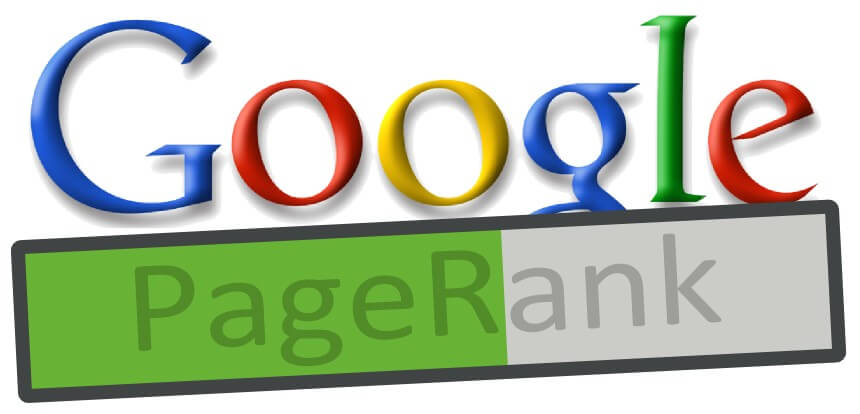Is your website lost in the depths of search results? If you’re not appearing on Google’s first page, your website is practically invisible to potential customers. In today’s digital age, poor online visibility can make or break a business. It’s no longer enough to just have a website; you need to ensure it’s optimized to rank well on search engines. This article will uncover the five common mistakes that keep websites hidden from Google’s first page and provide practical solutions to help you rise in the rankings.
In this article, we will cover:
- Common Mistakes Overview
- Detailed Breakdown of Each Mistake
- Practical Solutions
- Conclusion
Common Mistakes Overview
Achieving a high ranking on Google is critical for driving traffic and growing your business. Unfortunately, many websites make the same mistakes that hinder their visibility. Below are the five critical mistakes that often prevent websites from ranking well:
- Poor Mobile Optimization
- Slow Load Times
- Lack of Quality Content
- Weak Backlink Profile
- Ignoring Technical SEO
Each of these mistakes can have severe consequences for your website’s visibility and user engagement. Let’s explore them in detail.
Detailed Breakdown
1. Poor Mobile Optimization
With over half of all web traffic coming from mobile devices, having a mobile-optimized website is no longer optional—it’s essential. Poor mobile optimization leads to a subpar user experience, high bounce rates, and lower search engine rankings.
- Why it Occurs: Many businesses focus on desktop design, neglecting how their site performs on mobile devices. They may not test their sites on different screen sizes or fail to implement responsive design principles.
- Impact on SEO and User Experience: Google’s mobile-first indexing means that the mobile version of your site is prioritized over the desktop version in search rankings. If your site isn’t mobile-friendly, it’s likely to perform poorly in search results, reducing visibility and traffic.
- Example: A local Turkish restaurant’s website was losing customers because it wasn’t mobile-friendly. After redesigning the site for mobile, they saw a 40% increase in mobile traffic and improved local search rankings.
- How to Correct It: Ensure your website uses responsive design, test it on multiple devices, and use Google’s Mobile-Friendly Test tool to identify areas for improvement.
2. Slow Load Times
Page speed is a critical ranking factor for Google. Slow load times can frustrate users, leading to higher bounce rates and lower engagement.
- Why it Occurs: Common causes include unoptimized images, excessive use of plugins, poor server performance, and lack of caching.
- Impact on SEO and User Experience: Slow-loading websites frustrate users, leading them to abandon the page before it fully loads. Google’s algorithms recognize high bounce rates and may penalize your site’s ranking as a result.
- Example: An e-commerce site in Turkey faced a significant drop in sales due to slow load times. By compressing images and enabling browser caching, they improved load times by 50% and recovered their lost sales.
- How to Correct It: Optimize images, minify CSS and JavaScript, leverage browser caching, and consider using a Content Delivery Network (CDN) to speed up load times.
3. Lack of Quality Content
Quality content is the cornerstone of SEO. Without it, search engines and users have no reason to visit your site.
- Why it Occurs: Some websites focus on quantity over quality, producing thin, unhelpful content. Others may not update their content regularly, leaving outdated information that fails to engage users.
- Impact on SEO and User Experience: Poor content leads to low engagement, fewer backlinks, and poor user retention, all of which negatively impact SEO. Search engines favor websites that provide valuable, relevant, and well-structured content.
- Example: A global blog saw its traffic drop significantly after relying on low-quality guest posts. After refocusing on high-quality, well-researched articles, they saw a 70% increase in organic traffic.
- How to Correct It: Conduct thorough keyword research, create content that addresses user intent, and regularly update your site with fresh, valuable information.
4. Weak Backlink Profile
Backlinks are like votes of confidence from other websites. A weak backlink profile can signal to Google that your website lacks authority.
- Why it Occurs: Many websites either neglect link-building altogether or use black-hat SEO techniques to acquire low-quality links, which can lead to penalties.
- Impact on SEO and User Experience: A weak or toxic backlink profile can drastically lower your site’s authority, resulting in lower rankings. Google’s algorithm updates, such as Penguin, specifically target websites with poor link profiles.
- Example: A tech startup in Istanbul was penalized by Google due to a high number of spammy backlinks. They disavowed harmful links and started a genuine outreach campaign, regaining their lost rankings over time.
- How to Correct It: Focus on acquiring high-quality, relevant backlinks through guest blogging, influencer partnerships, and by creating shareable content. Regularly audit your backlink profile to disavow harmful links.
5. Ignoring Technical SEO
Technical SEO involves optimizing your website for the crawling and indexing processes. Ignoring this aspect can lead to several SEO issues.
- Why it Occurs: Website owners often focus more on content and design, overlooking the technical elements that help search engines understand and rank a site.
- Impact on SEO and User Experience: Issues such as broken links, poor site architecture, duplicate content, and missing metadata can severely impact your SEO. Search engines may struggle to crawl your site effectively, leading to lower rankings.
- Example: A global e-commerce website noticed a decline in traffic due to broken internal links and duplicate content. After addressing these technical issues, they saw a 30% improvement in organic traffic.
- How to Correct It: Conduct regular technical audits using tools like Screaming Frog or Ahrefs, fix broken links, ensure proper site architecture, and maintain clean and optimized metadata.
Practical Solutions
Improving your website’s visibility requires a proactive approach. Here are actionable steps to address each of the five common mistakes:
Improve Mobile Optimization
- Use responsive design frameworks like Bootstrap or Flexbox.
- Regularly test your website on different devices and screen sizes.
- Use Google’s Mobile-Friendly Test tool to identify and fix issues.
Enhance Load Times
- Optimize images using tools like TinyPNG or ImageOptim.
- Minify CSS, JavaScript, and HTML using tools like UglifyJS and CSSNano.
- Leverage browser caching and use a CDN like Cloudflare to reduce server load.
Create High-Quality Content
- Perform keyword research using tools like SEMrush or Ahrefs to understand user intent.
- Develop a content calendar to ensure regular updates and fresh content.
- Focus on creating long-form, valuable content that answers users’ questions comprehensively.
Build a Strong Backlink Profile
- Start a link-building campaign by reaching out to authoritative sites in your niche.
- Use tools like Moz or Majestic to analyze and improve your backlink profile.
- Disavow harmful links through Google Search Console to maintain a healthy link profile.
Optimize Technical SEO
- Conduct regular SEO audits with tools like Screaming Frog or Sitebulb.
- Fix broken links, optimize site speed, and ensure a clear site structure.
- Regularly update and optimize your metadata and schema markup.
- Optimize images using tools like TinyPNG or ImageOptim.
- Minify CSS, JavaScript, and HTML using tools like UglifyJS and CSSNano.
- Leverage browser caching and use a CDN like Cloudflare to reduce server load.
Create High-Quality Content
- Perform keyword research using tools like SEMrush or Ahrefs to understand user intent.
- Develop a content calendar to ensure regular updates and fresh content.
- Focus on creating long-form, valuable content that answers users’ questions comprehensively.
Build a Strong Backlink Profile
- Start a link-building campaign by reaching out to authoritative sites in your niche.
- Use tools like Moz or Majestic to analyze and improve your backlink profile.
- Disavow harmful links through Google Search Console to maintain a healthy link profile.
Optimize Technical SEO
- Conduct regular SEO audits with tools like Screaming Frog or Sitebulb.
- Fix broken links, optimize site speed, and ensure a clear site structure.
- Regularly update and optimize your metadata and schema markup.
- Start a link-building campaign by reaching out to authoritative sites in your niche.
- Use tools like Moz or Majestic to analyze and improve your backlink profile.
- Disavow harmful links through Google Search Console to maintain a healthy link profile.
Optimize Technical SEO
- Conduct regular SEO audits with tools like Screaming Frog or Sitebulb.
- Fix broken links, optimize site speed, and ensure a clear site structure.
- Regularly update and optimize your metadata and schema markup.
Conclusion
In a competitive digital landscape, avoiding these common mistakes is crucial for achieving higher visibility on Google’s first page. By focusing on mobile optimization, load times, content quality, backlinks, and technical SEO, you can significantly improve your website’s ranking potential. Don’t wait for your competitors to outrank you—take immediate action to audit and optimize your website. Consider seeking professional assistance to ensure your website is fully optimized and ready to perform.









